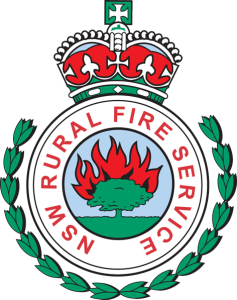10/50 VEGETATION CLEARING – WHAT YOU NEED TO KNOW

If you live in an area close to the bush, you need to prepare your home. The 10/50 Vegetation Clearing Scheme gives people living near the bush an additional way of being better prepared for bush fires.
The scheme allows people in a designated area to:
- Clear trees on their property within 10 metres of a home, without seeking approval; and
- Clear underlying vegetation such as shrubs (but not trees) on their property within 50 metres of a home, without seeking approval.
You can find out if your property is in a 10/50 Vegetation Clearing Entitlement Area using our online tool.
The 10/50 scheme is supported by the 10/50 Vegetation Clearing Code of Practice.
A review of the 10/50 scheme was conducted by the NSW Rural Fire Service, Department of Planning and Environment, and the Office of Environment and Heritage. The review has now been completed and a copy of the final report is available here.
Thirty recommendations have been made. The NSW Government is now in the process of implementing these recommendations.
Check the online tool on the day you are clearing
Check the online tool on the day you are clearing to re-confirm your eligibility to clear vegetation under the 10/50 Scheme. This is because the 10/50 vegetation clearing entitlement area, the excluded matters or other rules may have changed. It is important to know that you must follow the eligibility or rules in place at the time you clear any vegetation.
You may only clear your own land.
Important changes to the 10/50 scheme
Further changes have been announced to the 10/50 Vegetation Clearing Scheme. Legislative changes came into effect on 28 August 2015 and the 10/50 Vegetation Clearing Code of Practice has now been amended and takes effect commencing 4 September 2015.
You must now consider how the following changes affect your clearing proposal:
- The definition of a tree has been amended to include multi-stemmed trees. This means you can no longer remove multi-stemmed trees beyond 10 metres.
- The distance at which a tree may be removed has been clarified. You may only remove a tree if any part of the trunk that measures more than 30 centimetres in circumference (around the trunk) at a height of 1.3 metres above the ground, is within 10 metres of the external wall of the building.
- If you are using the distance from a building on your neighbours land to use the 10/50 entitlement (and your buildings are not within 10 metres or 50 metres respectively), you must receive their written consent. Where the tree or vegetation is within 10 metres or 50 metres respectively of buildings on more than one adjoining parcel of land, you must receive written consent from each landowner who adjoins your land.
- Clearing adjacent to farm sheds is now permitted under the 10/50 scheme.
A range of other changes to the 10/50 scheme are now in place in accordance with the commencement of the amended 10/50 Vegetation Clearing Code of Practice. Please review the amended Code of Practice and FAQs below in relation to your proposed clearing.
Changes to areas covered by the rule
The 10/50 Vegetation Clearing Scheme was introduced following the devastating 2013 bush fires in which more than 200 properties were destroyed.
The NSW Rural Fire Service (NSW RFS), in partnership with the Department of Planning and Environment and the Office of Environment and Heritage, undertook a formal review of the 10/50 Vegetation Clearing Scheme. It is clear from some submissions and feedback that while the scheme is designed to reduce bush fire risk, there has been some abuse of the fuel reduction provisions for other purposes.
As a result of the review of the 10/50 scheme, the entitlement area has been amended. The reduced entitlement area of 100m from higher risk vegetation has been maintained, covering 85 per cent of properties historically destroyed in a bush fire.
The easiest way to work out if you’re covered by the eligible area is checking our online tool. The tool contains the latest information on areas covered by the rule.

